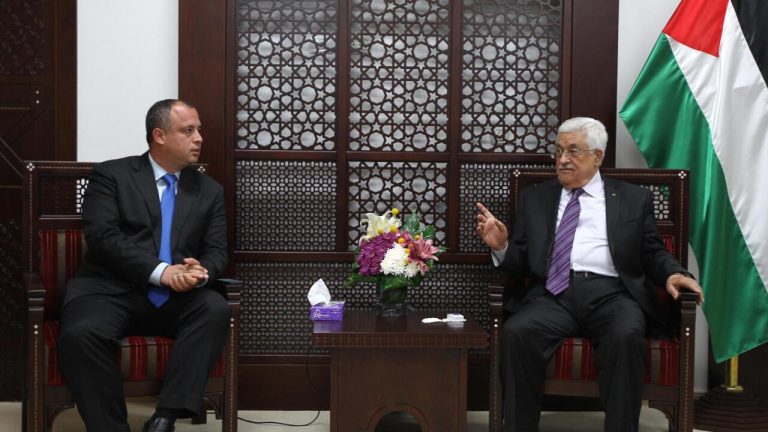Middle East peace talks showed tentative progress as negotiators reported movement on a narrow set of confidence-building measures, but major hurdles remain that could slow or stall the process. Mediators described a more pragmatic tone and set timelines for follow-up meetings, while parties signaled openness to limited steps aimed at reducing tensions on the ground.
Gaps persist over core issues – borders, security guarantees, political recognition, settlement activity, and humanitarian access – with each side facing domestic pressures that limit room to compromise. Diplomats warn that without a concrete roadmap and credible verification mechanisms, the fragile momentum could dissipate as quickly as it formed.
Table of Contents
- Cease fire framework advances with phased border openings and coordinated prisoner exchanges
- Mediators seek verification regime and regional guarantees via joint monitoring cell and aid corridor oversight
- Adopt sequenced concessions and clear enforcement benchmarks to counter domestic spoilers and timeline slippage
- The Conclusion
Cease fire framework advances with phased border openings and coordinated prisoner exchanges
Draft terms circulating among mediators outline a step-by-step plan that links a sustained lull in fighting to incremental reopening of key crossings, with each advancement conditioned on verified compliance and synchronized detainee releases; the blueprint leans on third-party guarantors, real-time monitoring, and a snap-back mechanism to deter spoilers while expanding humanitarian access and creating political space for deeper talks, though negotiators caution that trust deficits, hardline domestic pressures, and disputes over eligible names could still derail the timetable.
- Phase 1: Limited aid-only corridor reactivated under joint inspection teams, medical evacuations prioritized, and a 72-hour quiet period monitored by international observers.
- Phase 2: Expanded cargo throughput with scanning protocols, partial restoration of utilities, and controlled civilian movement for critical cases.
- Prisoner sequencing: Women, children, and medical cases first; subsequent waves tied to verifiable calm, with proof-of-life, ICRC access, and manifest-based confirmations.
- Verification stack: Shared dashboards, time-stamped convoy logs, and dispute panels empowered to adjudicate alleged breaches within set hours.
- Guarantor role: Regional and UN partners to underwrite compliance, offer security assurances, and coordinate logistics and funding for crossings.
- Safeguards: Snap-back clauses for material violations balanced by deconfliction hotlines to prevent escalation from isolated incidents.
- Headwinds: Political backlash over exchange ratios, contested detainee lists, and procurement delays for border tech risk compressing the window for implementation.
Mediators seek verification regime and regional guarantees via joint monitoring cell and aid corridor oversight
Diplomatic envoys are coalescing around a pragmatic architecture that would institute a time-bound verification mechanism anchored in a joint operations cell staffed by UN, regional, and guarantor-state officers, empowered to audit ceasefire claims in near-real time and to police humanitarian flows through designated corridors; the model blends independent sensor feeds, on-site liaison teams, and transparent reporting windows to curb deniability, while neighboring capitals weigh formal guarantees-backed by phased normalization and security assurances-contingent on measured compliance and civilian access benchmarks.
- Mandate: verify ceasefire incidents, detainee exchanges, and corridor integrity against standardized thresholds.
- Tools: shared dashboards, encrypted incident hotlines, GPS-tagged convoys, and third-party inspections.
- Accountability: weekly bulletins, snap-back penalties for obstruction, and incentive tranches tied to milestones.
- Coverage: border crossings, key supply routes, and deconfliction zones monitored around the clock.
- Protections: humanitarian carve-outs, whistleblower channels, and redress procedures for validated violations.
Adopt sequenced concessions and clear enforcement benchmarks to counter domestic spoilers and timeline slippage
Negotiators are moving toward a framework that breaks large promises into reciprocal, time-bound steps tied to verifiable milestones, aiming to deter spoilers and keep talks on schedule; the approach centers on measurable deliverables, automatic consequence ladders for missed targets, and transparent reporting that lets mediators and the public track progress in real time.
- Milestone clock: Day-30/Day-60 deliverables with third-party verification and public scorecards.
- Snap-back clauses: Automatic reversion of eased measures if benchmarks slip or violence spikes.
- Escrowed benefits: Trade, permits, and aid disbursed via escrow upon certified compliance.
- Graduated incentives: Layered benefits released stepwise to reward cumulative progress.
- Incident-response cell: 24/7 joint hotline with rapid investigation and de-escalation protocols.
- Penalty schedule: Pre-agreed, proportional sanctions for non-compliance to avoid ad hoc brinkmanship.
- Domestic lock-in: Parallel legislative tracks and stakeholder briefings to reduce veto risks.
- Dispute timer: Fast-track arbitration windows to resolve claims without stalling the calendar.
- Communications discipline: Synchronized statements and rumor-control to limit mobilization by spoilers.
The Conclusion
As negotiators weigh incremental gains against longstanding disputes, the talks have inched forward without resolving core issues. Security guarantees, borders, the status of contested areas, the future of settlements and displaced populations, and sequencing any steps on the ground remain points of friction. Periodic violence and domestic political pressures on all sides continue to narrow room for maneuver.
International mediators say channels remain open and technical teams are drafting options, but timelines are fluid. Envoys are expected to reconvene for the next round, with both sides signaling a preference to keep the process alive even as they harden public positions.
Whether these tentative understandings can be translated into enforceable commitments-and sustained amid events on the ground-will determine if the current momentum yields a durable framework or another pause in a decades-long cycle.


